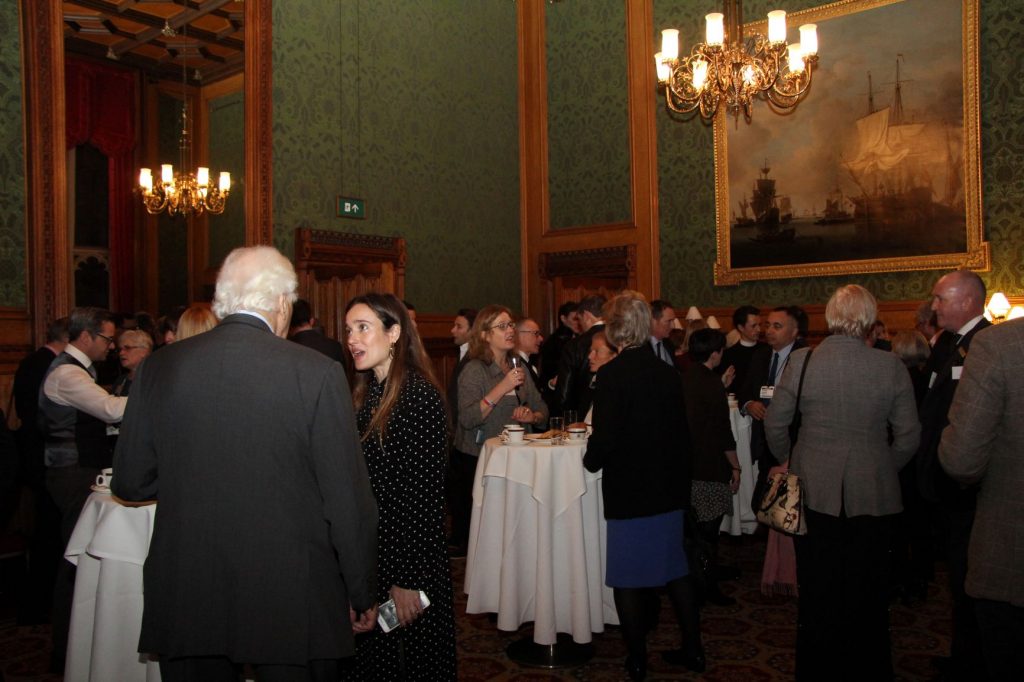One year on since Tessa Jowell’s final speech to the Lords
Friends, colleagues and family gather this afternoon to remember Tessa Jowell’s “seminal and moving” final speech to the Lords.
On Tuesday 22 January, from 4.30PM, the Tessa Jowell Brain Cancer Mission and Tessa’s family will host a reception to commemorate the one-year anniversary of Dame Tessa Jowell’s speech in the House of Lords. MPs and Peers, friends and family of Tessa are attending what is expected to be both an emotional and celebrational event.
It has been a year since Tessa’s inspirational speech in which she called for ‘greater collaboration’ and the use of ‘adaptive trials’ to give patients access to innovative treatments. She said: “I am not afraid, but I am fearful that this new and important approach may be put in the ‘too difficult’ box.”
Since her speech, the Tessa Jowell Brain Cancer Mission has been formed, with brainstrust’s involvement, to develop a new national strategy for combatting brain tumours. The mission unites professional, patient, charity and government groups to work together to make a tangible change in brain tumour treatment and research. You can read more about what the mission looks like here.
Today’s reception sees brainstrust and the other members of the Mission share the progress that we have made in Tessa Jowell’s name.
- We will welcome the recent launch of the Tessa Jowell BRAIN-MATRIX: a ground-breaking UK-wide trial aimed at increasing opportunities for brain tumour patients to try non-standard treatments. The BRAIN-MATRIX is being funded with a £2.8m investment from The Brain Tumour Charity and will be led by Professor Colin Watts, with brainstrust facilitating the patient and caregiver participation and input into the trial design.
- Announce the creation of dedicated neuro-oncology fellowships, to train the next generation of world-class doctors in the UK. We are working with the group to ensure that the fellowships reflect what you need along the whole brain tumour journey. For example we know there is a desperate need for dedicated training for neuro-oncologists and those with an interest in palliative care, where we know that the needs of people with a brain tumour are so different to that of any other illness
- Announce plans to improve the pathway of care for all neuro-oncology patients across the UK, ensuring that all patients receive the same high standard of care
- Reveal plans to attract and train bright scientists, bringing new ideas and people to further grow the brain tumour research community

One year on…
Jess Mills (Daughter of Tessa Jowell) said: “It’s hard to comprehend that it is only a year since Mum’s seminal speech. The daily physical absence of her in my life is impossibly painful – but every day as we work on delivering her vision I feel her leadership guiding and leading us forward, always encouraging us to be more ambitious, courageous and uncompromising in the pursuit of achieving the best possible outcomes. We have achieved an extraordinary amount in just a year and that is just another huge testament to what a giant of leadership she is, even in her passing. As we celebrate all we have done and all that is to come, my heart is full with pride today, as I know Mums would be too if she could see the change we are creating together.”
Lord (Charles) Falconer (Labour Peer and close friend of Tessa Jowell) said: “Tessa’s speech a year ago this week was one of the most special and moving moments I can remember in Parliament. It is fantastic to see that Tessa’s bravery and determination to help other cancer patients is continuing to have an impact, and the launch of the first ever adaptive trial for brain cancer in the UK will undoubtedly save lives in the future. There is much to do, but Tessa would be immensely proud today, and we are all proud of her”.
Dr. Nicky Huskens (Director of the mission) said: “It has been remarkable to see how the mission has evolved over the past few months. I have seen incredible drive and energy from everyone involved and I am particularly pleased with how the charities in this space have come together to realise our ambitions. Tessa’s daughter Jess has given us invaluable leadership and support. She is inspirational to work with.”










